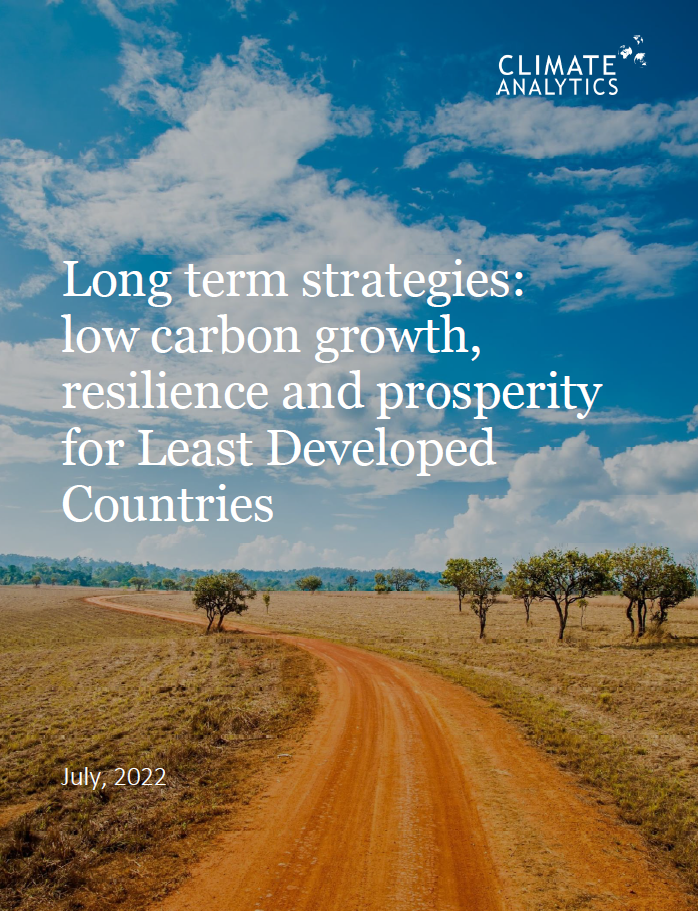Resilience Building In Least Developed Countries: Strategies For Sustainable Transformation

Table of Contents
Strengthening Institutional Capacity for Disaster Risk Reduction (DRR)
Effective disaster risk reduction (DRR) is fundamental to building resilience. This requires a robust institutional framework capable of anticipating, mitigating, and responding to disasters effectively.
Enhancing Governance and Policy Frameworks
Strong governance is the bedrock of successful DRR. This involves:
- Developing comprehensive national DRR strategies: These strategies should align with the Sendai Framework for Disaster Risk Reduction, providing a clear roadmap for action. Effective disaster preparedness planning is critical.
- Promoting good governance, transparency, and accountability: Transparent and accountable disaster management processes build trust and ensure resources are used effectively. This includes clear reporting mechanisms and independent oversight.
- Investing in capacity building: Governments and local authorities need training in DRR planning, implementation, and monitoring. This includes:
- Training programs focusing on risk assessment, early warning systems, and emergency response.
- Knowledge sharing platforms connecting experts and practitioners across the region.
- Establishment of robust early warning systems leveraging technology and community participation.
Empowering Local Communities
Local communities are the first line of defense against disasters. Their involvement is crucial for effective DRR. This includes:
- Participatory approaches: Involving communities in all phases of DRR, ensuring their knowledge and perspectives are integrated into planning and implementation. This is crucial for community buy-in and effective local action.
- Community-based disaster preparedness and response: Supporting the development of community-led initiatives, fostering self-reliance, and building local capacity for disaster response. This promotes local ownership and sustainability.
- Harnessing traditional knowledge: Recognizing and integrating traditional knowledge and coping mechanisms into modern DRR strategies. This ensures culturally appropriate and effective responses. This also builds on existing community wisdom and expertise.
- Examples include community-based early warning systems, participatory risk assessments, and community-led reconstruction efforts following disasters.
Investing in Climate-Resilient Infrastructure and Sustainable Development
Climate change exacerbates existing vulnerabilities in LDCs. Investing in climate-resilient infrastructure and sustainable development is paramount for building long-term resilience.
Climate-Smart Agriculture
Agriculture is the backbone of many LDC economies. Adapting agricultural practices to climate change is vital:
- Promoting drought-resistant crops and climate-smart agriculture: Investing in research and development of climate-resilient crop varieties and farming techniques is key.
- Investing in irrigation systems and water management infrastructure: Improving water access and management ensures agricultural productivity even during droughts.
- Providing access to climate information and early warning systems: Farmers need timely information to adapt their practices effectively. This includes access to weather forecasts and climate projections.
- Examples include promoting agroforestry, water harvesting techniques, and climate-resilient livestock breeds.
Sustainable Infrastructure Development
Resilient infrastructure is essential to withstand climate shocks and natural disasters. This involves:
- Building resilient infrastructure: Constructing infrastructure capable of withstanding extreme weather events and natural hazards.
- Prioritizing critical infrastructure: Focusing investments on essential services such as transportation, energy, and water systems.
- Integrating climate change adaptation: Incorporating climate change projections into infrastructure planning and design.
- Examples include building earthquake-resistant buildings, constructing flood-resistant infrastructure, and investing in renewable energy sources.
Diversifying Economies and Promoting Inclusive Growth
Economic diversification and inclusive growth are crucial for building resilience against economic shocks.
Supporting Small and Medium Enterprises (SMEs)
SMEs are the engine of economic growth in many LDCs. Supporting them is critical for resilience:
- Providing access to finance, training, and markets: SMEs need access to capital, skills development, and market opportunities to thrive.
- Promoting entrepreneurship and innovation: Encouraging the development of climate-resilient businesses and innovative solutions.
- Developing local value chains: Building strong local supply chains reduces reliance on external markets and enhances economic stability.
- Examples include microfinance initiatives, business incubation centers, and skills development programs.
Investing in Human Capital
Human capital is a nation's most valuable asset. Investing in education and health is crucial:
- Investing in education, health, and social protection: Improving human capital enhances a nation’s capacity to adapt and respond to shocks.
- Promoting access to quality healthcare: Ensuring access to quality healthcare, particularly for vulnerable populations, is vital.
- Strengthening social safety nets: Providing social safety nets protects vulnerable populations during economic downturns or disasters.
- Examples include investing in education and skills training programs, improving access to healthcare services, and providing social safety nets.
Fostering Regional and International Cooperation
International collaboration is essential for effective resilience building in LDCs.
Strengthening Regional Partnerships
Regional cooperation amplifies the impact of resilience-building efforts:
- Promoting regional cooperation on DRR and climate change adaptation: Sharing knowledge, resources, and best practices across borders.
- Sharing best practices and lessons learned: Learning from successes and failures in different contexts to improve strategies.
- Developing joint strategies for addressing transboundary risks: Collaborating on shared challenges, such as transboundary water management or disaster response.
- Examples include joint disaster response mechanisms, cross-border early warning systems, and regional knowledge sharing platforms.
Seeking International Support
International support is vital for resource-constrained LDCs:
- Mobilizing international financial and technical assistance: Accessing funding and expertise from international organizations and donor countries.
- Advocating for increased funding for climate change adaptation and DRR: Securing dedicated funding to address these critical challenges.
- Strengthening partnerships with international organizations and development agencies: Building strong partnerships to leverage expertise and resources.
- Examples include seeking grants and concessional loans, accessing technical expertise from international organizations, and engaging with development partners.
Conclusion
Building resilience in least developed countries requires a holistic approach encompassing institutional strengthening, sustainable development investments, economic diversification, and strong international collaboration. By implementing the strategies outlined above, these nations can enhance their ability to withstand shocks, adapt to change, and achieve sustainable transformation. Investing in resilience building in least developed countries is not merely a humanitarian imperative, but a crucial step towards fostering global stability and prosperity. Let's work together to strengthen resilience building initiatives in these vulnerable nations and contribute to a more sustainable and equitable future. Continue learning about effective strategies for resilience building in least developed countries and support initiatives that promote long-term sustainable development.

Featured Posts
-
 Orlando Magics Victory Ends Cavaliers 16 Game Streak
May 07, 2025
Orlando Magics Victory Ends Cavaliers 16 Game Streak
May 07, 2025 -
 Nba Prediction Knicks Vs Cavaliers Who Takes The Win
May 07, 2025
Nba Prediction Knicks Vs Cavaliers Who Takes The Win
May 07, 2025 -
 Inside The Conclave Understanding The Papal Election Process
May 07, 2025
Inside The Conclave Understanding The Papal Election Process
May 07, 2025 -
 La Decentralisation Du Repechage De La Lnh Un Regret
May 07, 2025
La Decentralisation Du Repechage De La Lnh Un Regret
May 07, 2025 -
 Zaufanie Polakow Najnowszy Ranking Ib Ri S Dla Onetu
May 07, 2025
Zaufanie Polakow Najnowszy Ranking Ib Ri S Dla Onetu
May 07, 2025
